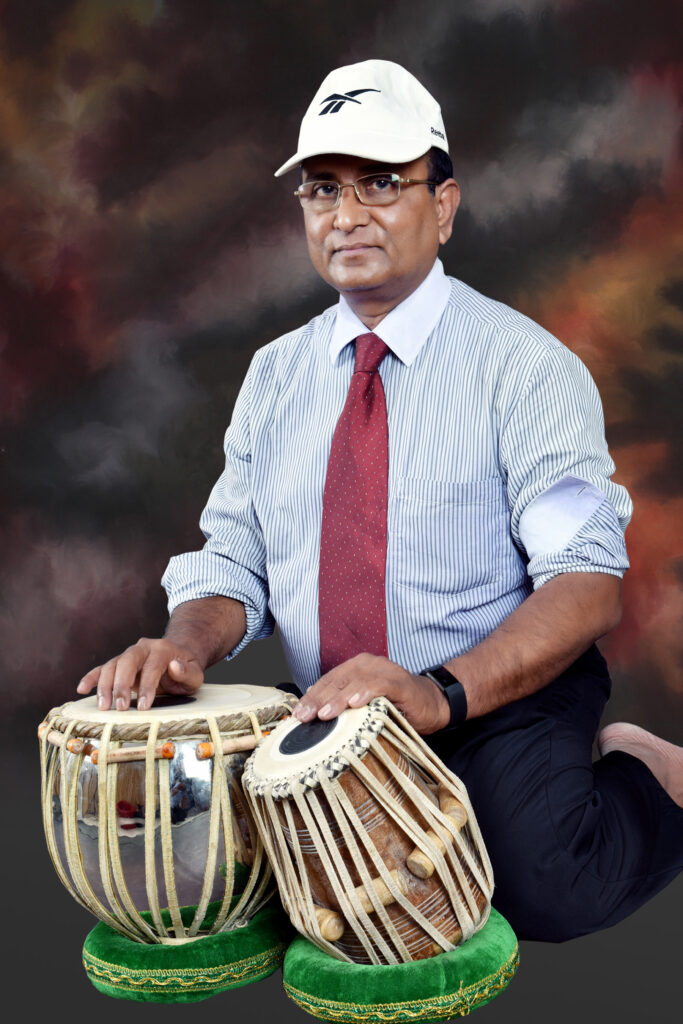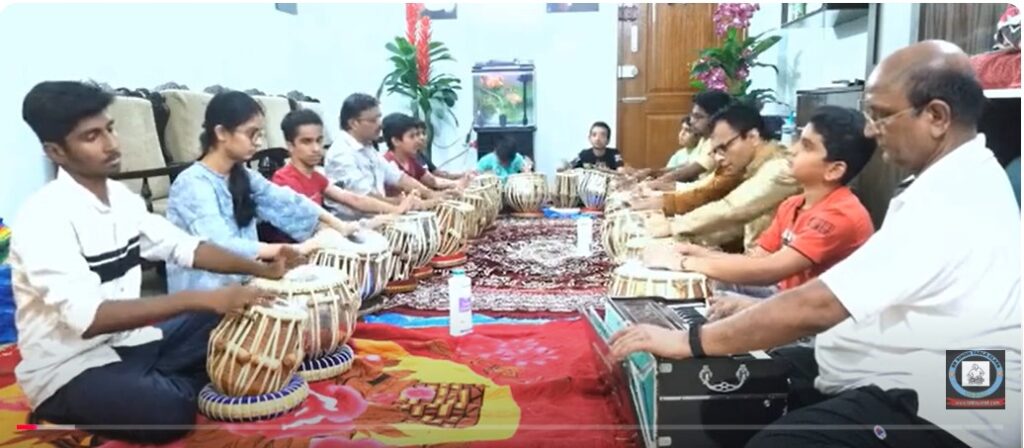Pancham Taal – The Dynamic 5-Beat Rhythm of Indian Percussion,IntroductionIndian classical music is rich with intricate rhythmic cycles, known as taals, that form the backbone of compositions. While popular taals like Teentaal (16 beats) and Ektaal (12 beats) dominate performances, there exists a unique and powerful 5-beat rhythmic cycle known as Pancham Taal. This uncommon yet dynamic taal adds an interesting twist to Indian percussion, offering a challenge to both performers and listeners.In this blog, we’ll explore the history, structure, and significance of Pancham Taal, along with its usage in compositions and performances.
Historical Context of Pancham Taal
Pancham Taal derives its name from the Sanskrit word Pancham, meaning “fifth” – a direct reference to its five-beat structure. This taal is less commonly used in mainstream classical music but finds its place in folk traditions and experimental rhythmic compositions.
The origins of Pancham Taal can be traced back to ancient Indian percussion systems, where odd-numbered rhythmic cycles were used to create dynamic tension and contrast. It has been explored by legendary tabla maestros in their improvisations and has also been used in contemporary fusion music.
Structure and Characteristics of Pancham Taal
Pancham Taal consists of 5 beats (matras), divided into two vibhags (divisions):
- Matras (Beats): 5
- Vibhags (Divisions): 2 (3+2)
- Taali (Clap): 1 (on the 1st beat)
- Khaali (Wave): 1 (on the 4th beat)
Theka (Basic Beat Cycle) of Pancham Taal:
| Matra | 1 | 2 | 3 | 4 | 5 |
|---|---|---|---|---|---|
| Bol | DHA | TIRKIT | DIN | NAK | TAK |
| Taali/Khaali | X (Taali) | 0 (Khaali) |
This asymmetrical rhythmic pattern makes Pancham Taal an interesting choice for improvisation and composition. The presence of khaali on the fourth beat creates a sense of rhythmic syncopation, making it feel off-balance yet engaging.
Usage and Significance in Music
Classical Music
In Hindustani classical music, Pancham Taal is not as commonly used as Teentaal or Jhaptal. However, it is often employed in tabla solos, intricate improvisations, and experimental rhythmic explorations. Tabla maestros have used Pancham Taal as a base for complex tihai (three-part rhythmic phrases) and improvisational phrases.
Folk and Fusion Music
In Indian folk traditions, odd-beat taals like Pancham Taal are sometimes used in regional dance forms and folk drumming. More recently, fusion artists have explored this 5-beat cycle in jazz, contemporary classical, and world music collaborations, blending it with Western and electronic elements.
Dance and Performance
Dancers trained in Kathak and Bharatanatyam sometimes incorporate Pancham Taal for dynamic footwork and rhythmic storytelling. The odd-numbered cycle challenges dancers to play with tempo and syncopation.
Famous Performances and Artists Exploring Pancham Taal
Although rare in traditional compositions, some tabla maestros and fusion artists have experimented with Pancham Taal. A few notable performances include:
- Ustad Zakir Hussain – Known for his rhythmic innovations, he has demonstrated variations of 5-beat cycles in solos.
- Pt. Anindo Chatterjee – Has explored Pancham Taal in tabla improvisations.
- Taufiq Qureshi – Uses Pancham Taal patterns in his fusion and folk-inspired drumming.
Many modern percussionists incorporate Pancham Taal in electronic music and world fusion, blending it with African, Middle Eastern, and Western rhythms.
Learning Pancham Taal: Tips for Beginners
If you’re a tabla student or percussion enthusiast, practicing Pancham Taal can enhance your sense of rhythm and timing. Here are a few steps to get started:
- Clap and Count – Start by clapping on the first beat (Taali) and waving on the fourth beat (Khaali). Count 1-2-3, 4-5 to internalize the structure.
- Practice Theka Slowly – Recite the basic Pancham Taal theka:
- DHA – TIRKIT – DIN – NAK – TAK
- Try Variations – Add simple tihai (triplet phrases) and fillers between beats.
- Use a Metronome – Set a metronome to a slow tempo and gradually increase speed.
- Listen to Performances – Find tabla solos that include Pancham Taal and try to follow along.
Conclusion
Pancham Taal may not be the most commonly used rhythm in Indian classical music, but its unique 5-beat cycle makes it an exciting and versatile taal for experimentation. From classical tabla solos to modern fusion, this taal offers a fresh perspective on rhythm and improvisation.
If you’re a musician, dancer, or just a rhythm enthusiast, try clapping and playing along with Pancham Taal—you might discover an entirely new rhythmic world! 🎶
What do you think about Pancham Taal? Have you heard it in any compositions? Let us know in the comments
https://www.youtube.com/@BhagawanSingh


